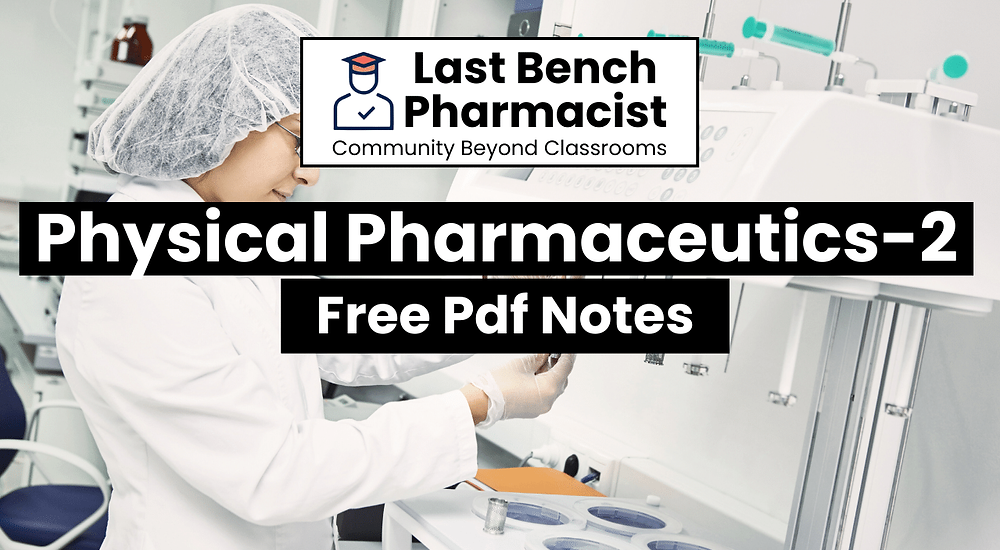



#bpharmnotes #bpharmphysicalpharmaceuticsnotes #bpharmpdfnotes
B. Pharm Physical Pharmaceutics 2 beckons you to delve deeper into the captivating world of drug formulation, where molecules dance and transform to create life-saving medicines. Feeling lost in the labyrinth of powders, emulsions, and controlled release systems? Fear not, for I come armed with a potent elixir – comprehensive B. Pharm Physical Pharmaceutics 2 PDF notes.
Scope:
The course deals with the various physica and physicochemical properties, and principles involved in dosage forms/formulations. Theory and practical components of the subject help the student to get a better insight into various areas of formulation research and development, and stability studies of pharmaceutical dosage forms.
Objectives: Upon completion of the subject student shall be able to:
Understand various physicochemical properties of drug molecules in the designing the dosage forms
Know the principles of chemical kinetics & to use them for stability testing and determination of expiry date of formulations
Demonstrate use of physicochemical properties in the formulation development and evaluation of dosage forms.
Classification of dispersed systems & their general characteristics, size & shapes of colloidal particles, classification of colloids &comparative account of their general properties. Optical, kinetic & electrical properties. Effect of electrolytes, coacervation, peptization& protective action
Newtonian systems, law of flow, kinematic viscosity, effect of temperature, non-Newtonian systems, pseudoplastic, dilatant, plastic, thixotropy, thixotropy in formulation, determination of viscosity, capillary, falling Sphere, rotational viscometers
Deformation of solids: Plastic and elastic deformation, Heckel equation, Stress, Strain, Elastic Modulus
Suspension, interfacial properties of suspended particles, settling in suspensions, formulation of flocculated and deflocculated suspensions. Emulsions and theories of emulsification, microemulsion and multiple emulsions; Stability of emulsions, preservation of emulsions, rheological properties of emulsions and emulsion formulation by HLB method.
Particle size and distribution, mean particle size, number and weight distribution, particle number, methods for determining particle size by different methods, counting and separation method, particle shape, specific surface, methods for determining surface area, permeability, adsorption, derived properties of powders, porosity, packing arrangement, densities, bulkiness & flow properties.
Reaction kinetics: zero, pseudo-zero, first & second order, units of basic rate constants, determination of reaction order. Physical and chemical factors influencing the chemical degradation of pharmaceutical product: temperature, solvent, ionic strength, dielectric constant, specific & general acid base catalysis, Simple numerical problems. Stabilization of medicinal agents against common reactions like hydrolysis & oxidation. Accelerated stability testing in expiration dating of pharmaceutical dosage forms. Photolytic degradation and its prevention